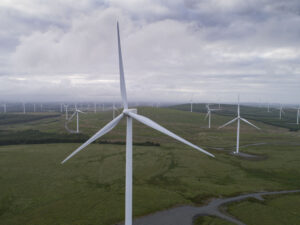 Scientists from the University of Strathclyde have called for derelict land around Glasgow to be used to reduce fuel poverty.
Scientists from the University of Strathclyde have called for derelict land around Glasgow to be used to reduce fuel poverty.
A report by the academics in the journal Renewable Energy claims the Scottish city has enough vacant brownfield land to build a network of ground source heat pumps, which could be used to heat social housing across Glasgow.
The scientists found Glasgow has the highest concentration of derelict land anywhere in Scotland, totaling 1,195 hectares in more than 860 sites.
When combined with licensed and unlicensed landfill sites, brownfield land represents 9% of the city area.
‘This study suggests there is potential to ease fuel poverty in Glasgow by making use of brownfield land to deploy renewable energy technologies such as ground-source heat pumps,’ said senior lecturer, Richard Lord.
‘Brownfield land is a legacy of industrial retraction in many towns and cities worldwide, where land lies vacant after it has gone into disuse, and is often a barrier to redevelopment.
‘Using this land for renewable heating is one option that can support the development of a low-carbon economy and also stimulate regeneration,’ he added.
‘Perhaps the greatest challenge in reusing brownfield land to alleviate fuel poverty comes from the inherent nature of the land itself,’ he added.
‘The fact that land is not in use may indicate that it is not currently needed or not economically viable. This might be due to location or to the cost or remediation of contamination.
‘It is clear that using brownfield land to provide ground source heating for social housing has the potential to contribute to alleviating fuel poverty, as well as bringing significant opportunities for the restoration and reuse of vacant and derelict land.’
In the past, the British Geological Survey has worked with Glasgow City Council to look into the use of heat energy from the ground to help warm homes around the city.
In particular, it looked at how much heat can be taken from the waters in abandoned mines under Glasgow. According to their study, 40% of the city’s heat could be provided in this way.
Several other local authorities are looking at ground source heat pumps and district energy schemes. In March, the first district energy centre of its kind in the north east of England was opened by the energy minister at the time, Jesse Norman.
The £18m Gateshead District Energy Centre will use a pair of 2MW gas-powered combined heat and power plants to generate enough electricity to power 5,000 homes, with the waste heat from the engines used to provide hot water for heating.
Scottish Renewables’ head of policy, Michael Rieley told New Start that heat makes up more than half of the energy used in Scotland.
‘Focusing on its decarbonisation is crucial if we are to meet not only our existing climate change targets but the ambitious new goal of producing 50% of all energy from renewable sources by 2030, as proposed in the Scottish Government’s draft energy strategy,’ said Rieley.
‘Further deployment, particularly in areas of high-density housing – where district heat schemes make most sense – could, as this study suggests, help alleviate fuel poverty as well as promoting economic growth and reducing carbon emissions from our heat sector.’

















Leave a Reply